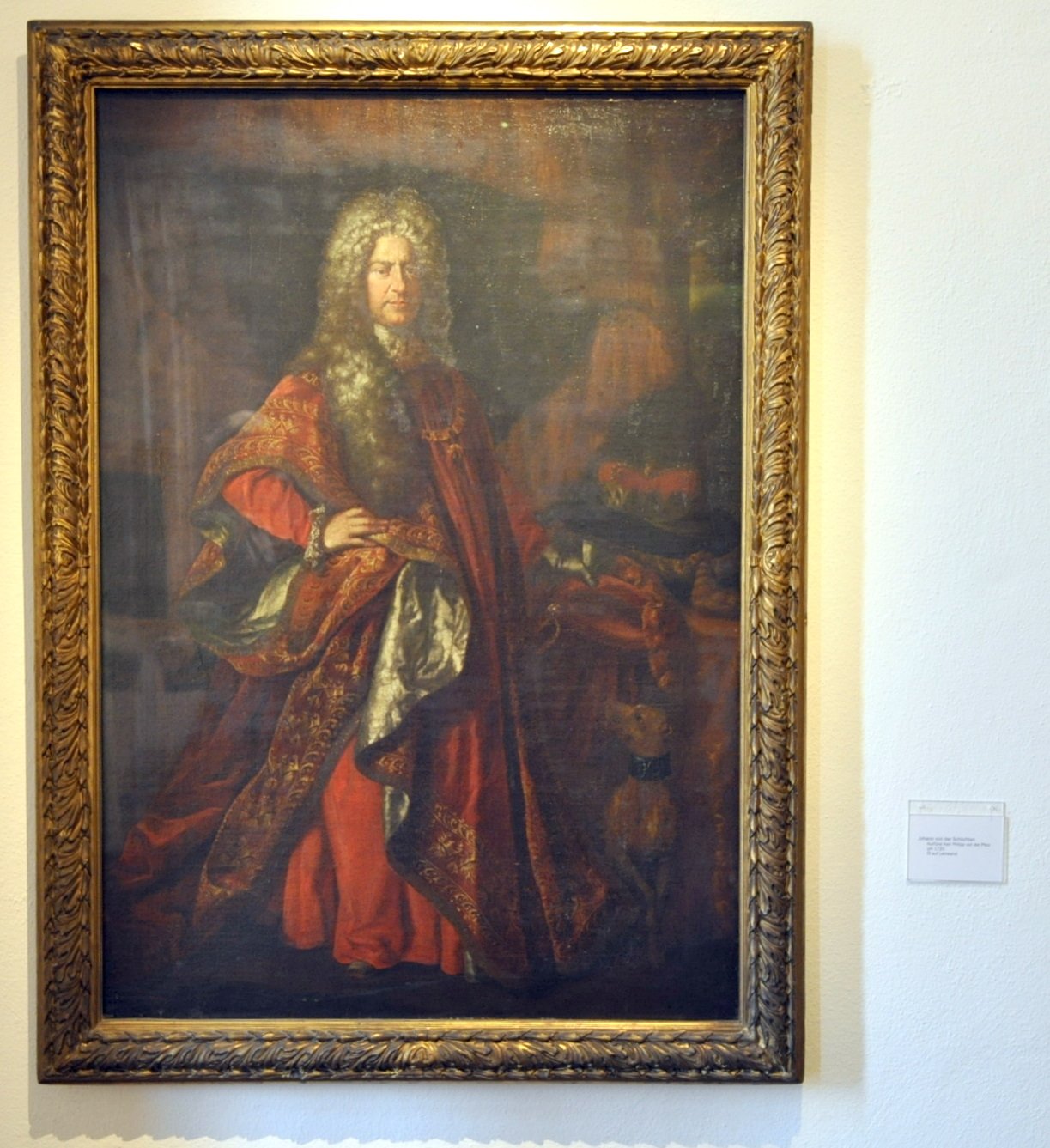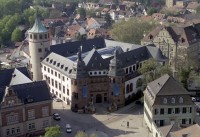Karl Philipp war von 1716 bis 1742 regierender Pfalzgraf und Kurfürst von der Pfalz sowie Herzog von Jülich und Berg sowie von Pfalz-Neuburg. Er verlegte die Residenz nach Mannheim.
Zur Biografie siehe https://de.wikipedia.org/wiki/Karl_III._Philipp_(Pfalz).
Douwen erlernte die Malerei bei Christophorus Puitlink in Roermond. Anschließend war er drei Jahre lang für Don Jan Dellano Velasco tätig, einen kunstliebenden Finanzrat des spanischen Königs Karl II. In dessen großer Gemäldesammlung hatte er die Gelegenheit die Werke berühmter italienischer Meister zu studieren. Dadurch wurde er bekannt und er bekam Aufträge hoher Persönlichkeiten des Düsseldorfer Hofes. Er wurde 1682 dort sogar als Hofmaler angestellt. Seit 1691 hatte er als „Cabinetsmaler“ die ranghöchste Stellung am Hof inne.
en

